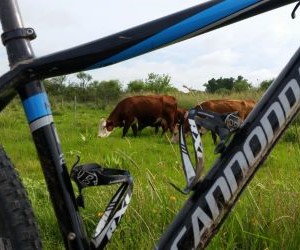Learn how to deal with punctures on long rides with prevention tips, repair techniques, and smart gear choices to keep rolling without stress.
WHAT ARE THE BEST TIPS FOR CYCLING IN COASTAL AREAS?
Cycling in coastal areas offers stunning views and fresh air, but it also brings unique challenges like crosswinds, salty air, and rolling terrain. Riders must adapt both equipment and strategy to maintain comfort and performance. From choosing the right gear to protecting your bike against corrosion, preparation makes the difference between a scenic ride and a struggle. This guide explores the best tips for cycling in coastal regions, with insights tailored for road cyclists, commuters, and adventure riders.

Unique challenges of coastal cycling
Coastal cycling combines beauty with unpredictability. Unlike inland routes, seaside roads and paths expose riders to environmental factors that demand adjustments in technique and maintenance. Understanding these challenges helps riders anticipate and adapt.
Dealing with wind
Strong winds are the hallmark of coastal routes. Headwinds can sap energy, while crosswinds make bike handling tricky. Riders need to adjust body position, draft when possible, and pace themselves strategically to conserve energy.
Salt and humidity exposure
Salty air accelerates corrosion on bike components. Chains, cassettes, and bolts are particularly vulnerable. Humidity also affects comfort, often leading to dehydration if riders don’t hydrate proactively.
Coastal terrain
Seaside routes often feature rolling hills, sandy paths, or uneven roads. These conditions require versatile gearing and strong bike handling skills. Gravel sections may demand wider tires or lower pressures for stability.
Headwinds and crosswinds challenge stability
Salt exposure accelerates component wear
Humidity increases hydration needs
Mixed terrain requires adaptable equipment
Recognizing these factors allows riders to prepare gear, mindset, and strategy before hitting the coastal roads.
Essential preparation tips
Preparation is the key to enjoying coastal rides. From bike setup to personal gear, small adjustments make a big difference in performance and safety.
Choosing the right bike setup
Use corrosion-resistant components where possible, and apply protective sprays to your chain and bolts. Wider tires provide stability on sandy or uneven surfaces. Lowering tire pressure slightly can improve grip in windy conditions.
Clothing and gear
Layered clothing helps regulate temperature in coastal climates, which can shift quickly from sunny to breezy. Windproof jackets, sunglasses with UV protection, and lightweight gloves all improve comfort and protection.
Hydration and nutrition
Humidity and wind increase dehydration risk. Riders should carry extra fluids and electrolytes. Salt tablets or hydration mixes can offset mineral loss from sweating in coastal climates.
Protect bike with anti-corrosion sprays
Use wider tires for stability
Wear windproof, layered clothing
Carry hydration with electrolytes
Proper preparation reduces the risk of mechanical failures and maximizes rider comfort across long, demanding routes.
Practical riding strategies
Even with preparation, on-the-road strategies determine how well cyclists manage coastal conditions. Smart pacing, positioning, and recovery habits keep rides efficient and enjoyable.
Managing wind during the ride
When facing headwinds, reduce your profile by lowering your torso and gripping the drops if on a road bike. In crosswinds, maintain a steady line and avoid sudden steering movements. Drafting behind another rider significantly reduces energy expenditure.
Protecting the bike post-ride
After coastal rides, rinse the bike with fresh water to remove salt residues. Dry thoroughly and re-lubricate the chain. This simple habit extends component lifespan and prevents costly damage.
Adapting pacing and effort
Cycling against strong winds can quickly sap energy. Instead of fighting headwinds aggressively, adjust pacing and conserve energy for sheltered sections or tailwinds where you can recover speed.
Lower profile to cut through wind
Use drafting to save energy
Rinse and re-lube bike post-ride
Pace strategically to manage effort
By combining smart strategy with mechanical care, riders can enjoy the beauty of coastal landscapes without being overwhelmed by their challenges.
YOU MAY ALSO BE INTERESTED






